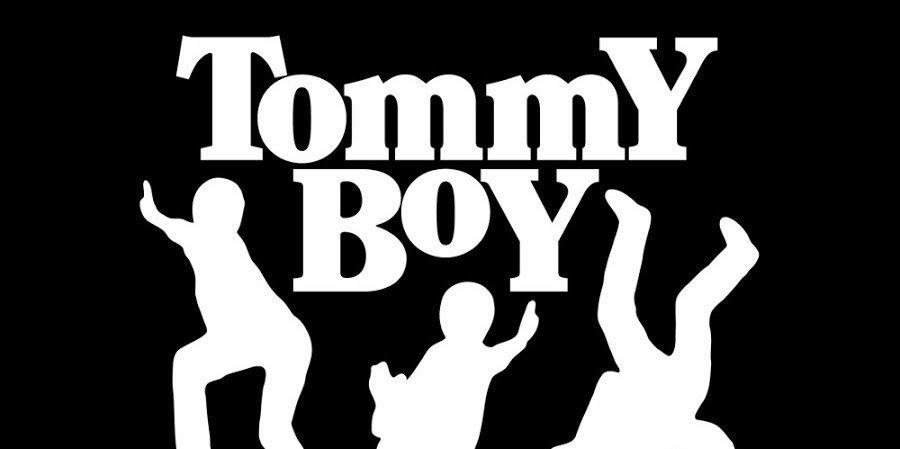The Lazy Afternoons And Angsty Optimism Of ‘3 Feet High And Rising’
Read The Liner Notes For Our De La Soul Reissue
It was Valentine’s Day, 2014, and thousands upon thousands of fans were rushing to file-sharing websites to download De La Soul’s first six albums, which the group had uploaded as .zip files and beamed directly to the fans’ email addresses, which they had collected themselves. Those albums — including Stakes Is High, De La Soul Is Dead and Vinyl Me, Please’s Essentials Record of the Month in March, their monumental debut, 3 Feet High and Rising — were unavailable anywhere on the legal internet, then as they are today, due to contracts that clear their samples for physical release, but do not cover digital distribution. The delirious, server-crashing mad dash to secure the files was understandable: the records in question were bronzed by critics and burned into the brains of rap fans going back generations. They’ve soundtracked sweaty high school house parties and are even enshrined in the Library of Congress. What I’m trying to tell you is that those albums matter; I’m also trying to tell you that someone owns the copyrights.
“They did tap on our window,” Dave “Trugoy” Jolicoeur said of Warner, to the New York Times in an interview a couple years after the fact. Imitating the conglomerate: “Hey guys, what the fuck are you doing?”
What De La Soul was doing was giving new life to some of the most vibrant, inventive, vexing, thoroughly alive records in the history of hip-hip. That an act so self-consciously weird could become foundational to the generations that followed, in sound and in ideology, is a testament both to the singular brilliance of the group and to the forward-thinking, creatively open ideals that hip-hop aspires to — and that De La so readily insisted were still far away, on the horizon line. 3 Feet High and Rising is the sound not only of young, black American men discovering themselves, but of their first-bumpy forays into the outside world, their voyages into their parents’ record collections, and their bristling as they watched a culture they loved turn into a commodity they couldn’t control.
The story goes like this. At high school on Long Island, Jolicoeur and his childhood friend Kelvin Mercer linked up with another student, Vincent Mason, and began making music together. After some tweaking and testing, the three settled on stage names: Trugoy, Posdnuos and Maseo, respectively. It wasn’t long before a demo of theirs impressed Prince Paul, a fellow Long Islander who had been working with Stetsasonic. In short order, Paul had helped the group secure a deal with Tommy Boy, and the four went to work on what would become 3 Feet High and Rising. This was 1988.
As acrobatic and instantly unforgettable as the rappers are, the production is what first knocks you in the skull. Paul’s use of (and volume of) samples was as groundbreaking as it was mesmerizing. It was not the same cacophony that another Long Island act, Public Enemy, was getting from the Bomb Squad, but it was a cacophony nonetheless — only this one bent away from Reagan and toward labyrinthine in-jokes. 3 Feet is filled with hooks and yawning moments of fresh air, but those are earned by the runs that lead up to them, runs filled with technical wizardry and delightfully lofi sound design.
But while the textures can be credited to Paul, the alternating angst and optimism on 3 Feet High and Rising could only have come from Pos and Trugoy. The album is unmoored from everything except the kinds of rejection you feel in the summers after high school lets out. When it frets, it frets about girls in school and whether there’s anything good to cop at the record store, to the point where the two exceptions to this — the songs about place and class, “Ghetto Thang” and “Potholes in My Lawn” — are afforded an extra weight.
3 Feet High and Rising is the first of many De La records to build a slang and syntax that is overtly and showily impenetrable to outsiders. Part of this is the magic of being teenaged friends. Another part is the group’s open reverence for the earliest days of recorded hip-hop, a sound and style they felt had been corrupted. And the album’s massive hit, “Me Myself and I,” a flip of Funkadelic’s “(Not Just) Knee Deep,” reflects exactly that. In the video, De La are forced to navigate a high school full of students and teachers who try to pressure them into dressing, acting and sounding the mainstream boogeymen De La saw everywhere and conjured in their music. This is how fast rap was evolving by the end of the 1980s: before most of white America had grasped the basic tenets of the genre, there were hit songs on the radio by new rappers skewering the generation above them for betraying the one that preceded them. Not bad as mission statements go.
That said, one of this album’s great strengths is that not everything has been rendered in Technicolor and stretched to fit your screen; lots of it feels as if it spilled out of a basement just before it was finished. For example, the one-minute, 53-second “Take It Off” is usually read as a little shard of ideology, for obvious reasons: the track is a long list of clothing items and accessories — durags, fat laces, shell-toed sneakers — punctuated by urges to, well, “take it off.” But just as interesting as the song’s subject matter is the way the rappers’ voices blend with and enjamb on one another; it’s loose, a giant exhale despite its underlying earnestness. These ebbs allow the proper songs on 3 Feet to breathe.
Short songs like “Take It Off” are not the only respites on 3 Feet High and Rising. One of Prince Paul’s last innovations before the record was submitted to the label was a series of skits, including the famous ones of a mock game show. Aside from kicking off a decades-long skit boom in rap, they affirmed that De La Soul’s albums would be ambitious and ambitiously weird, a few commercial breaks removed from strict reality.
3 Feet High and Rising was a massive hit with fans, critics and even with the other upstart rappers who should have been De La’s competitors. Yet while it was daring, experimental and occasionally inscrutable, it did little to prepare audiences — or the group members themselves — for just how strange an arc De La’s career would trace in the decade that followed. In the debut’s immediate wake, the group became beaten down due to a grueling schedule, and had grown disillusioned with their pigeonholing as peace-and-love hippies, which was exacerbated by the way the group had been marketed. So they turned in De La Soul Is Dead, which was not completely devoid of their characteristic wit, but which leaned heavily into that bitterness about the group’s image and public standing. It was well-enough received, but nothing like 3 Feet.
In 1993, De La dropped their strangest and least successful album to that point, Buhloone Mindstate. Buhloone carried the internal logic and cryptic asides that had marked De La’s work from the beginning to illogical extremes. But the follow-up to that album was, once again, a deliberate course correction. Stakes Is High was conceived out of desperation — the group members feared they might have to get day jobs if it didn’t stick — and has been buoyed by and saddled with its reputation as a record that’s proudly conservative, in form and in point of view. This is perhaps a reductive reading of (the Prince Paul-less) Stakes, but it’s impossible to shake the feeling that De La Soul barreled fearlessly toward the cliff’s edge, took a peek at what lies below and scampered back to safety.
The fact that you have no option but to hear 3 Feet High and Rising or its successors on a physical format begs some uncomfortable questions. Digital streaming platforms are not collectively owned: they’re the property of giant corporations, with lawyers and balance sheets and profit-loss reports. Will anyone at those companies decide that tracking down rights holders, determining the validity of old agreements, settling lawsuits and paying license fees is worth whatever streaming revenue these records might bring in? If the answer is no — the answer is certainly no — what happens if and when those platforms become the only places where people listen to music? Do the records cease to exist, in a de facto sense? How about in a literal one?
No matter its availability, 3 Feet High and Rising is a gigantic record when you consider its far-reaching influence — and just as towering when your narrow your field of vision to the lazy afternoons and English classes that Pos, Trugoy, Maseo and Paul animate so clearly. It might not be convenient, but it’s unquestionably and eternally essential.
Paul Thompson is a Canadian writer and critic who lives in Los Angeles. His work has appeared in GQ, Rolling Stone, New York Magazine and Playboy, among other outlets.
Related Articles
Join the Club!
Join Now, Starting at $36Pages











